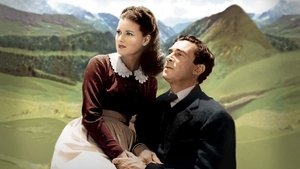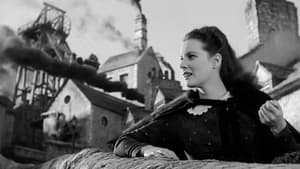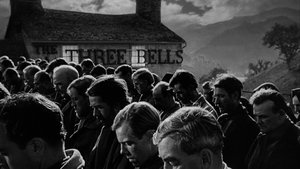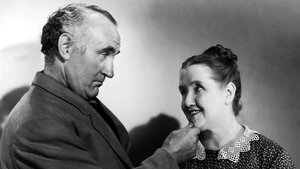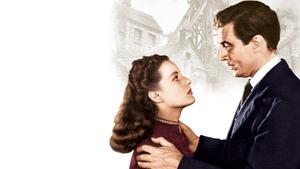Video Sources 0 Views
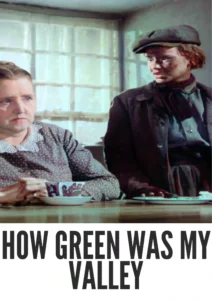
Download How Green Was My Valley (1941) Colorized HD | Walter Pidgeon | Sentimental Family Drama
Synopsis
A Welsh Family’s Story: How Green Was My Valley (1941) in Stunning Color

Step back in time with How Green Was My Valley, a heartwarming family drama from 1941, now beautifully colorized for an immersive viewing experience. This film, directed by John Ford, beautifully portrays the life of a Welsh mining family during a period of hardship and change. Perfect for fans of classic cinema and touching human stories, this HD download brings a timeless tale of love, loss, and resilience to your screen. Also known as Cwm Hedd in Welsh.
How Green Was My Valley Storyline: A Chronicle of Love and Loss
How Green Was My Valley tells the story of the Morgans, a close-knit Welsh family living in a mining village in the late 19th and early 20th centuries. Through the eyes of Huw Morgan, the youngest son, we witness their joys and sorrows as they navigate the challenges of working in the coal mines, facing economic hardship, and dealing with personal tragedies.The film explores themes of family loyalty, community spirit, and the changing way of life in Wales as industrialization transforms the landscape and threatens the traditional values of the village. From the bonds between brothers and sisters to the love between parents and children, How Green Was My Valley celebrates the enduring power of family in the face of adversity. Ultimately, it is a moving and unforgettable portrayal of the human experience.
Movie Cast
The film features a talented cast of actors who bring this emotional story to life:
- Walter Pidgeon as Mr. Gruffydd
- Maureen O’Hara as Angharad
- Donald Crisp as Gwilym Morgan
- Roddy McDowall as Huw Morgan
- Sara Allgood as Mrs. Beth Morgan
Movie Genre
How Green Was My Valley falls into the genre of sentimental family drama, with elements of social commentary and historical significance. Its sweeping scope, heartfelt performances, and evocative depiction of Welsh culture make it a timeless classic.
Historical Context: John Ford’s Masterpiece and the Golden Age of Hollywood
Released in 1941, How Green Was My Valley is considered one of director John Ford’s finest achievements, showcasing his mastery of visual storytelling, character development, and emotional resonance. The film was produced during the Golden Age of Hollywood, a period of unparalleled creativity and innovation in American cinema. How Green Was My Valley won the Academy Award for Best Picture, cementing its place in film history.
Colorization Details
This colorized version of How Green Was My Valley has been meticulously restored using modern digital techniques, enhancing the visual appeal while preserving the film’s original emotional impact. The colorization process involved carefully analyzing the grayscale tones of the original black and white footage and assigning appropriate colors to each scene. While the specific software used remains proprietary, the techniques employed included advanced algorithms for color palette selection and image enhancement. This painstaking process brings new life to the characters and settings, making the story even more engaging for modern audiences. While some may debate the merits of colorizing classic films, it introduces these films to a broader audience, ensuring their legacy for future generations.
Technical Details
- Director: John Ford
- Screenplay: Philip Dunne
- Based on: the novel by Richard Llewellyn
- Cinematography: Arthur C. Miller
- Edited by: James B. Clark
- Production Company: 20th Century Fox
- Distributed by: 20th Century Fox
- Runtime: 118 minutes
Technical Specifications
- Download Format: MP4
- Resolution: HD (1080p)
- Compatibility: Compatible with most devices, including smartphones, tablets, computers, and smart TVs.
Reviews and Critical Reception
How Green Was My Valley (1941) is widely regarded as a cinematic masterpiece, celebrated for its powerful storytelling, stunning visuals, and moving performances. It has received numerous awards and accolades, and continues to resonate with audiences around the world. As a timeless classic, How Green Was My Valley offers a poignant and unforgettable glimpse into the lives of a Welsh mining family.
FAQs
- Q: What is How Green Was My Valley about?
- A: How Green Was My Valley tells the story of a Welsh mining family and their struggles and triumphs in a changing world.
- Q: Is How Green Was My Valley (1941) a well-known film?
- A: Yes, How Green Was My Valley is a highly acclaimed and widely recognized classic of American cinema.
- Q: Is this version of How Green Was My Valley colorized?
- A: Yes, this version has been professionally colorized to enhance the viewing experience.
- Q: What makes How Green Was My Valley so special?
- A: How Green Was My Valley is a beautifully crafted and emotionally resonant film that explores universal themes of family, love, and loss.
- Q: What is the download format?
- A: The download format is MP4, which is compatible with most devices.
- Q: What resolution is the download?
- A: The resolution is HD (1080p), providing a high-quality viewing experience.
Download Now in HD!
Watch How Green Was My Valley Today!

